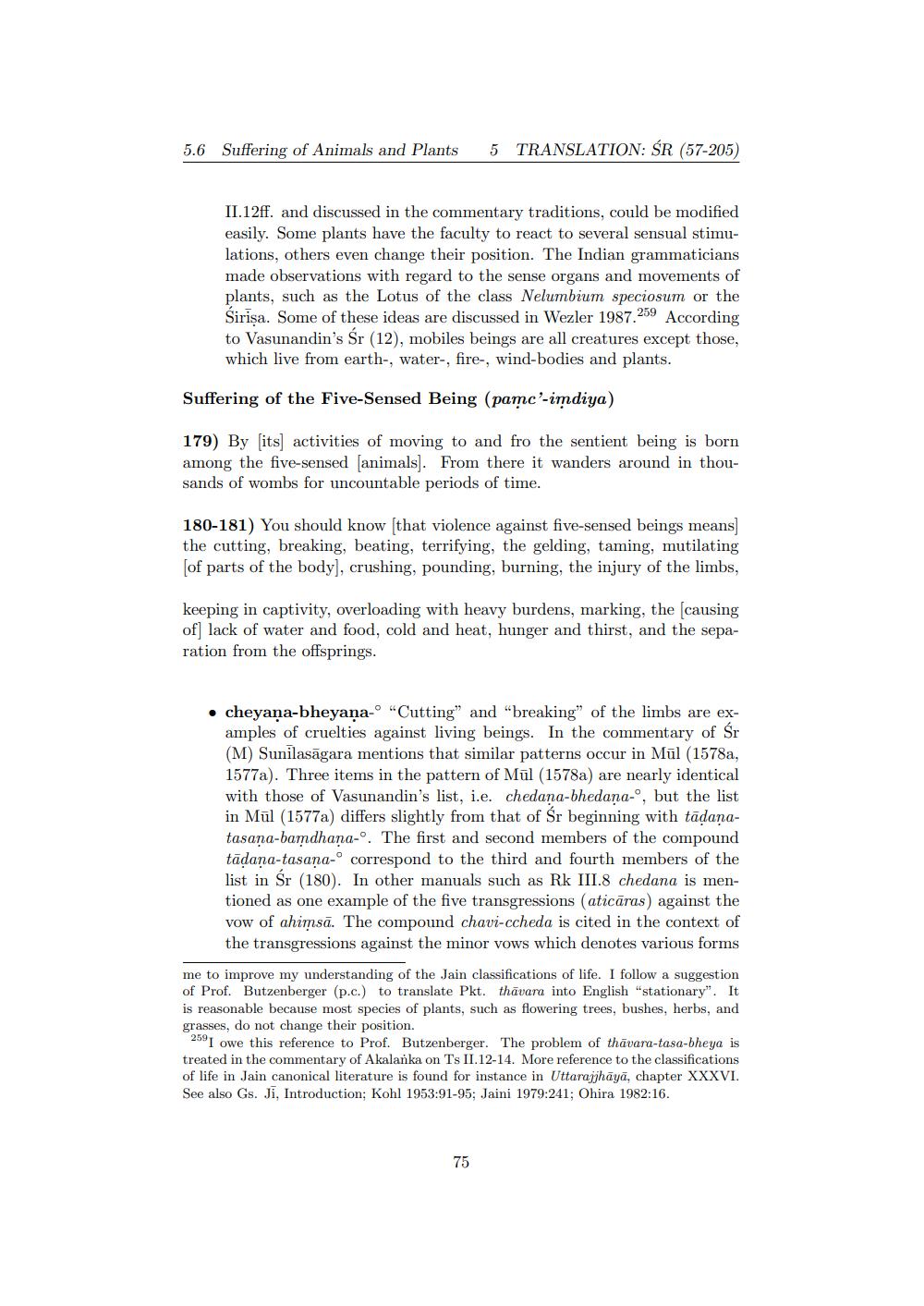________________
5.6 Suffering of Animals and Plants
5 TRANSLATION: ŚR (57-205)
II.12ff, and discussed in the commentary traditions, could be modified easily. Some plants have the faculty to react to several sensual stimulations, others even change their position. The Indian grammaticians made observations with regard to the sense organs and movements of plants, such as the Lotus of the class Nelumbium speciosum or the Sirişa. Some of these ideas are discussed in Wezler 1987.259 According to Vasunandin's Sr (12), mobiles beings are all creatures except those, which live from earth-, water-, fire-, wind-bodies and plants.
regard to the sense orkans and moveme
Suffering of the Five-Sensed Being (pamc-imdiya)
179) By its activities of moving to and fro the sentient being is born among the five-sensed animals). From there it wanders around in thousands of wombs for uncountable periods of time.
180-181) You should know that violence against five-sensed beings means) the cutting, breaking, beating, terrifying, the gelding, taming, mutilating [of parts of the body), crushing, pounding, burning, the injury of the limbs,
keeping in captivity, overloading with heavy burdens, marking, the causing of] lack of water and food, cold and heat, hunger and thirst, and the separation from the offsprings.
cheyana-bheyana-o "Cutting" and "breaking of the limbs are examples of cruelties against living beings. In the commentary of Sr (M) Sunilasāgara mentions that similar patterns occur in Mül (1578a, 1577a). Three items in the pattern of Mül (1578a) are nearly identical with those of Vasunandin's list, i.e. chedana-bhedana-, but the list in Mül (1577a) differs slightly from that of Śr beginning with tādanatasana-bamdhana-o. The first and second members of the compound tādana-tasaņa-o correspond to the third and fourth members of the list in Sr (180). In other manuals such as Rk III.8 chedana is mentioned as one example of the five transgressions (aticāras) against the vow of ahimsā. The compound chavi-ccheda is cited in the context of the transgressions against the minor vows which denotes various forms
me to improve my understanding of the Jain classifications of life. I follow a suggestion of Prof. Butzenberger (p.c.) to translate Pkt. thāvara into English "stationary". It is reasonable because most species of plants, such as flowering trees, bushes, herbs, and grasses, do not change their position.
2591 owe this reference to Prof. Butzenberger. The problem of thāvara-tasa-bheya is treated in the commentary of Akalanka on Ts II. 12-14. More reference to the classifications of life in Jain canonical literature is found for instance in Uttarajjhāyā, chapter XXXVI. See also Gs. Ji, Introduction; Kohl 1953:91-95; Jaini 1979:241; Ohira 1982:16.




